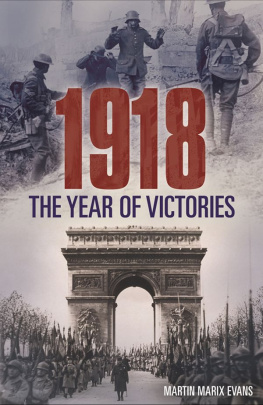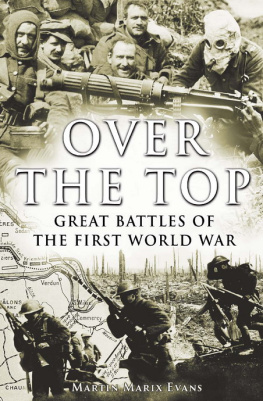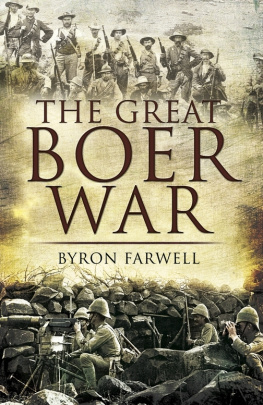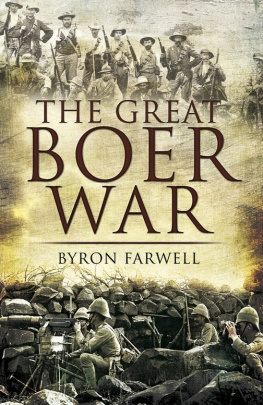howitzers and twelve 6-inch guns. The Royal Horse Artillery brought out seventy-eight 12-pounders. Almost all these were out-ranged by Boer weapons of similar type. Furthermore, the British use of field artillery had to undergo a radical revision from the approved tactics that lost the guns at the Battle of Colenso to the fire-from-concealment approach that proved effective at the Battle of Magersfontein. In addition, new methods of coordinating artillery support and infantry movement had to be developed.
The Field Artillery manual, in its 1896 version, laid down that the role of the artillery was to support other arms by fire establishing such a fire supremacy in the battle area that the enemy can neither interfere with operations nor develop his own effectively. When coming into action it was laid down that the guns would be some 200 yards (183m) forward of the limbers (ammunition wagons) and wagons with the reserve ammunition, on a line with twenty-yard (18.3m) intervals between them and with an ammunition wagon just to the rear of each gun. The guns were to be placed on firm ground with a clear view of the target. This was all well and good unless the enemy had comparable or superior guns. When the British Horse Artillery, operating according to very similar rules, came into action at the Battle of Magersfontein, firm ground for the guns could not be found and the recoil of their fire pushed them back down the little hill on which they were standing, into cover from Boer fire. They were thus able to operate efficiently with an observer taking sight of the fall of shell and giving orders to improve the aim. The commander was reprimanded for this unconventional behaviour, though it was later adopted as routine.
12-pounder: Weight of shell 12.5lb/5.67kg. Range: time fuse 3,700 yards/3,380m; percussion 5,400 yards/4,940m.
15-pounder: Weight of shell 14lb/
Reference:
Hall, Darrell, ed. Fransjohan Pretorius and Gilbert Torlage, The Hall Handbook of the Anglo-Boer War (Pietermaritzburg, University of Natal Press, 1999).
Gold and the Witwatersrand
Gold was discovered in the Transvaal in 1886. A gold rush followed, with people, uitlanders,arriving from all over the world to seek their fortune. The nature of the ore low-grade but available in vast quantities called for high investment such as only companies like Wernher-Beit, owned by Julius Wernher and Alfred Beit, and Cecil Rhodess Consolidated Goldfields could afford. It was their interests that led to the Jameson Raid, the attempted overthrow of the Boer government.
Thereafter the South African Republic (ZAR) enjoyed the massive tax revenues which funded the purchase of weapons and promised to change the balance of power in the area. British imperialist and economic interests alike were threatened. Force having failed, democracy was attempted by those in the pay of the mining companies and a bid was made to have the franchise extended to the uitlanders;the failure of this bid led to the Second Boer War.
See also:
.
Reference:
Pakenham, Thomas, The Boer War (London, Weidenfeld & Nicolson, 1979; Abacus, 1992); Pretorius, Fransjohan, The Anglo-Boer War 18991902 (Cape Town, Don Nelson, 1985).
Gordon, Brigadier-General J. R. P.
Gordon joined the 15th Hussars in 1879 at the age of nineteen and served in the Afghan War of 1880, in the First Boer War, in the Bechuanaland Expedition of 188485, in Burma in 1887, in Lagos in 1892 and in the Ashanti War of 189596. He was in command of the 3rd Cavalry Brigade in Major-general French's Cavalry Division on the ride to relieve Kimberley. After they had crossed the Riet River near Waterval and the Modder at Klip Drift, the cavalry had to pass a nek (a pass between hills) dominated by Boers and their artillery. French gave Gordon the task of breaking through, which he did with the 9th and 15th Lancers to the fore, at the gallop.
See also:
.
Gough, Lieutenant-Colonel Hubert De La Poer,
18701963
Hubert Gough joined the 16th Lancers in 1889 and saw service in India. He served under Sir Redvers Buller at the battles of Colenso and Spoienkop and was given a mounted infantry command at Vaalkrans. During the guerrilla phase of the war he commanded a column in the defence of northern Natal and was defeated and captured by Commandant-general Louis Botha at Blood River Poort in September 1901. He seems to have been somewhat impulsive in mounting an attack before he was fully appraised of his enemy's dispositions, but to some extent redeemed himself by escaping.
Gough achieved high command in the First World War in France and was unlucky in being the man in command when the offensive of March 1918 pushed the British back some forty miles. He was relieved of his command and recalled to England.
See also:
.
Reference:
Pakenham, Thomas, The Boer War (London, Weidenfeld & Nicolson, 1979; Abacus, 1992).
Graspan (or Enslin), Battle of,
25 November 1899
After forcing the Boers to withdraw at the Battle of Belmont, the British under Lord Methuen engaged them two days later near Graspan, ten miles (16km) further along the road towards Kimberley, where the British were besieged. Before withdrawing once more, some of the Boers were forced down from the hills facing the British left and, from the foot of the kopje, fired on the advancing Royal Naval Battalion. The effectiveness of high-velocity rifle fire over flat ground was demonstrated in the number of casualties the British suffered. Nonetheless, the positions were taken and the Boers fell back to the Modder River.
The British reconnaissance of the positions to which the Boers fell back after the Battle of Belmont was mistaken in concluding that only some 400 men held the position. More than five times that number occupied the line of hills or kopjes that lay across the railway line between the little settlements of Graspan and Enslin. De la Rey with his Transvaal commandos had been joined by men of the Winburg, Bloemfontein, Jacobsdal, Hoopstad and Fauriesmith commandos. The plan was to engage the Boers with artillery before rolling up their positions from east to west.
While the shells poured down on the hills, the Naval Brigade and the King's Own Yorkshire Light Infantry made the long flanking march to the east in the increasing heat of the day. They turned to attack and immediately came under heavy fire when they were about 500 yards (450m) from the base of the kopjes. This came not only from their front, but also from their left where some Boers had been driven off the hilltops by the artillery and were down amongst the rocks at the base of the hill, firing over the flat ground. It was not until the British had got close to the hill to their front that a spur sheltered them from this fire and the steepness of the hill prevented the Boers above from bringing their rifles to bear.
The hills were taken in a series of short rushes, giving the high ground on the Boer left, the east, to the British and thus rendering the rest of the Boer positions to the west untenable. The Boers retreated and the British cavalry and mounted infantry were too few to successfully pursue and take them. Of a total of five officers and 190 men, the Marines lost two officers and nine men, and one officer and seventy-two men were wounded, while the sailors lost two officers and two men, and another six were wounded. The Marines had suffered 44 per cent casualties, partly the result of Boer rifle fire and partly because they failed to stay in open formation; bunching up made them easy targets. The commander of the Naval Brigade, Captain R. C. Prothero, was severely wounded.
Next page








